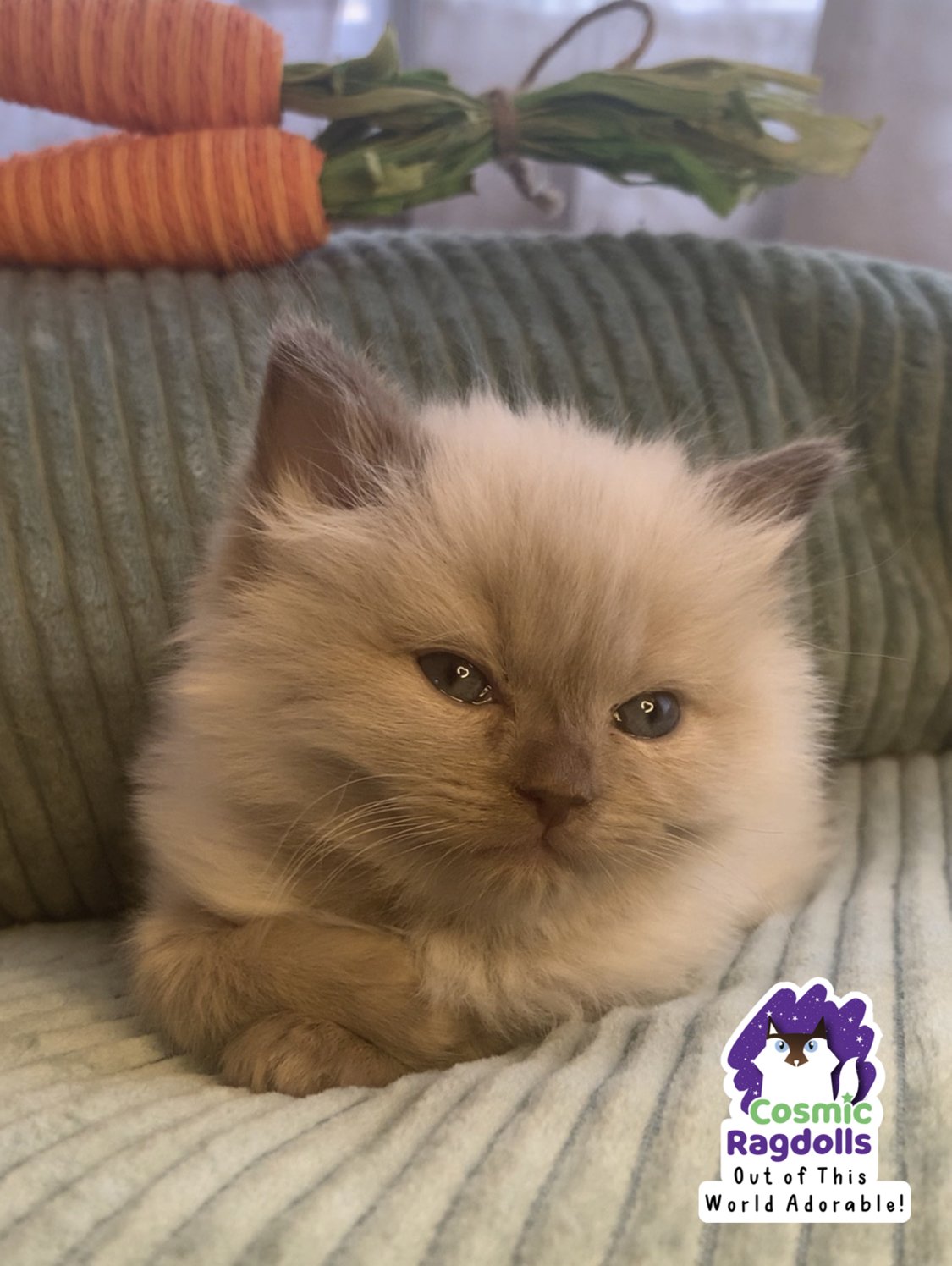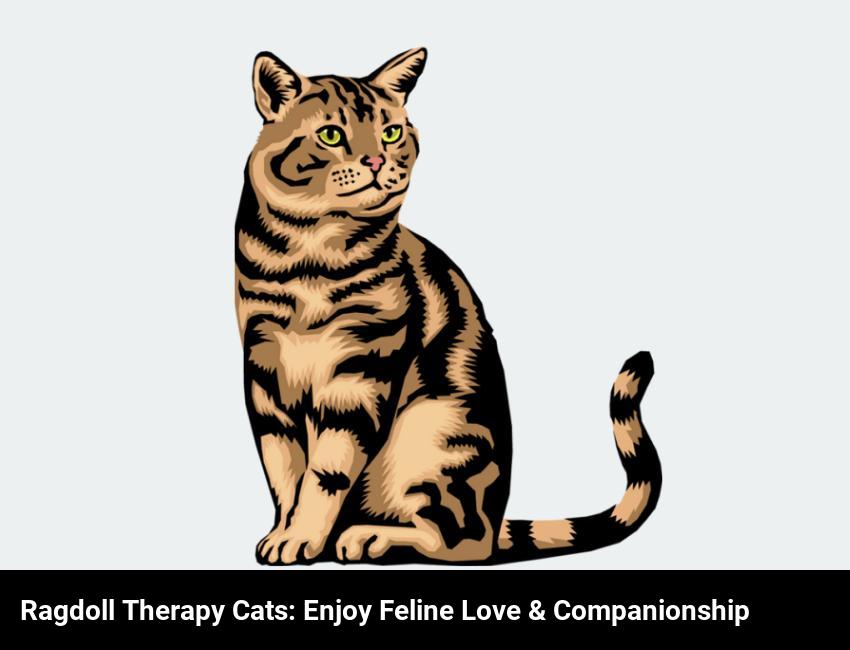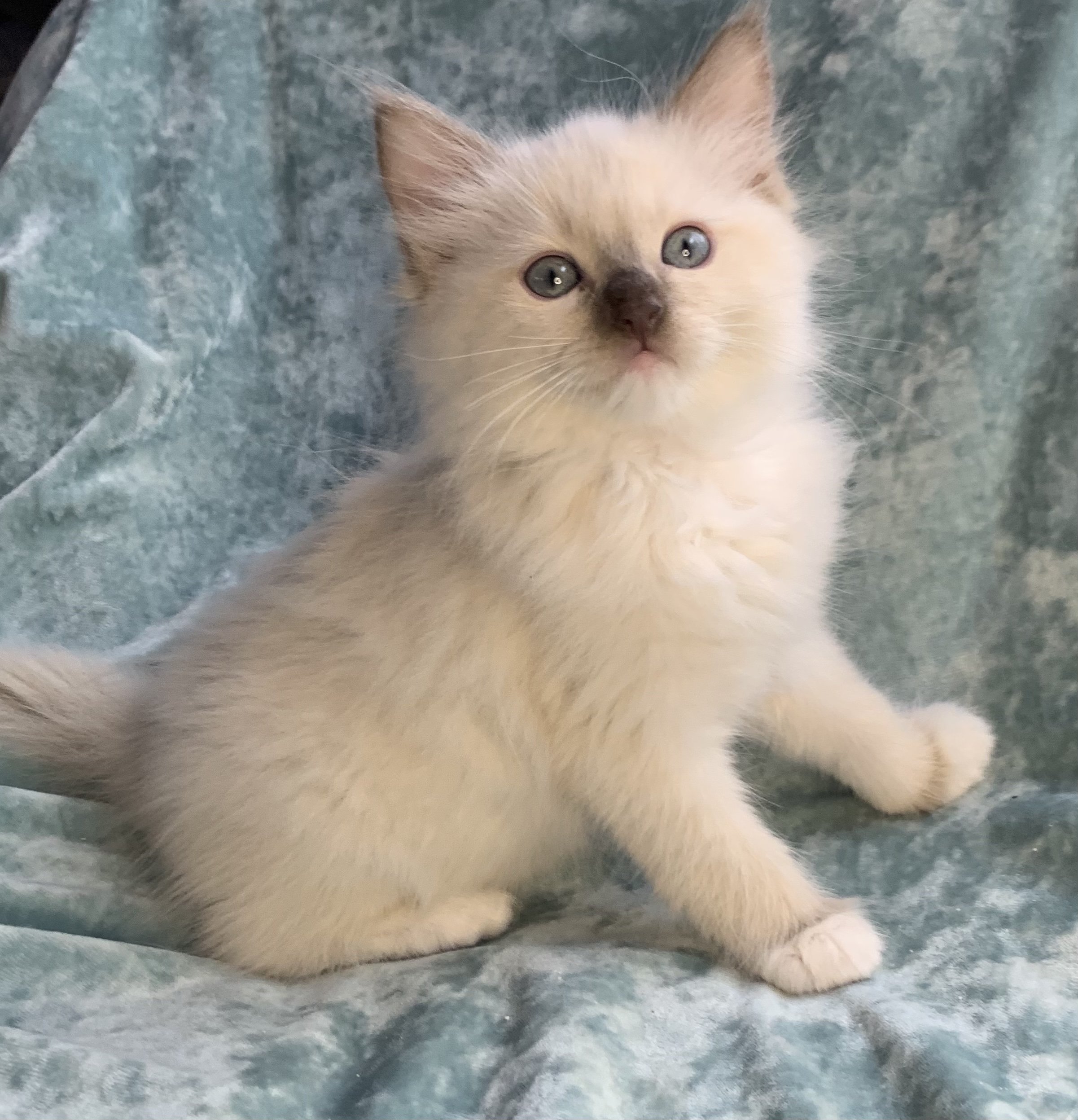Ever heard of the term "therapy cat"? Well, let me tell ya, ragdoll therapy cats are not just cute fluff balls—they’re legit mood boosters. These cats have this magical ability to make even the grumpiest person crack a smile. Whether you're dealing with stress, anxiety, or just need a furry friend to cuddle with, ragdoll therapy cats are here to save the day. Trust me, once you dive into the world of ragdoll cats, you'll be hooked.
Imagine coming home after a long, exhausting day at work. All you want is to unwind and relax, right? Now picture this: a soft, fluffy ragdoll cat jumping onto your lap, purring like a little engine, and giving you those big, blue eyes. Sounds pretty amazing, doesn’t it? That’s exactly what makes ragdolls such great therapy companions. They’re not just pets; they’re emotional support animals that can truly transform your life.
But hold up—what exactly makes ragdoll cats so special? Why are they becoming increasingly popular as therapy animals? Stick around, because we’re about to dive deep into the world of ragdoll therapy cats. From their unique traits to their incredible ability to provide comfort, this article’s got all the juicy details you need. So grab a cup of coffee, sit back, and let’s explore why ragdoll cats are the ultimate therapy companions.
Read also:Simon Cowell An Indepth Look At The Life And Impact Of An Entertainment Mogul
What is Ragdoll Therapy Cat?
A ragdoll therapy cat is basically a ragdoll cat that’s been specially trained to provide emotional support and companionship to people in need. These cats are known for their calm demeanor, affectionate nature, and ability to handle stressful situations with grace. Unlike other breeds, ragdolls are super laid-back, making them perfect for therapy work. They’re not the type to run and hide when things get chaotic—they’ll stick by your side no matter what.
Why Ragdolls Stand Out as Therapy Cats
There are tons of cat breeds out there, but ragdolls really shine when it comes to therapy work. Here’s why:
- They’re incredibly affectionate and love human interaction.
- They have a calm and relaxed temperament, which helps soothe anxious people.
- They’re super adaptable and can handle different environments with ease.
- Their striking appearance—big blue eyes and soft fur—makes them irresistible to almost everyone.
Let’s face it—there’s something about a ragdoll cat that just melts your heart. Their calm and gentle nature makes them the perfect candidates for therapy work, whether it’s in hospitals, nursing homes, or even just in your own home.
The Benefits of Having a Ragdoll Therapy Cat
Now, let’s talk about the real reason why you should consider getting a ragdoll therapy cat: the benefits. These cats aren’t just cute—they’re downright life-changing. Here are some of the top benefits of having a ragdoll therapy cat:
- Reduces Stress and Anxiety: Studies show that petting a cat can significantly lower stress levels. Ragdolls, with their calm demeanor, are especially good at this.
- Improves Mental Health: Owning a therapy cat can help combat feelings of loneliness and depression. Ragdolls are great listeners (even if they don’t talk back).
- Boosts Physical Health: Believe it or not, having a cat around can actually lower your blood pressure and reduce the risk of heart disease.
- Provides Unconditional Love: Ragdolls don’t judge—they just love. What more could you ask for?
And let’s not forget about the sheer joy of having a ragdoll cat around. They’re like little comedians, always finding ways to make you smile. Whether it’s their clumsy antics or their adorable snuggles, ragdolls have a way of brightening even the darkest days.
How Ragdoll Cats Are Trained for Therapy Work
Not every ragdoll cat is cut out to be a therapy cat. It takes special training and temperament to handle the demands of therapy work. Here’s a quick breakdown of how ragdoll cats are trained:
Read also:A Closer Look At Crystal Gayles Husband And Her Personal And Family Life
Step 1: Socialization
Socialization is key when it comes to therapy cats. Ragdoll kittens are exposed to a variety of environments, people, and situations from a young age. This helps them become comfortable in different settings and reduces their fear or anxiety.
Step 2: Temperament Testing
Not all ragdolls are suited for therapy work. Breeders and trainers carefully assess each cat’s temperament to ensure they have the right personality for the job. Cats that are overly shy or aggressive aren’t typically chosen for therapy work.
Step 3: Training
Once a ragdoll cat has passed the temperament test, they undergo formal training. This includes learning basic commands, getting used to being handled by strangers, and practicing calm behavior in stressful situations.
By the time a ragdoll cat is ready for therapy work, they’re basically a furry therapist. They know how to comfort people, stay calm in chaotic environments, and provide that all-important emotional support.
Ragdoll Cats vs. Other Therapy Animals
So, how do ragdoll cats stack up against other therapy animals? Let’s break it down:
- Dogs: Dogs are great therapy animals, but they can be overwhelming for some people. Ragdolls, on the other hand, are much more low-key and less likely to cause anxiety.
- Rabbits: Rabbits are cute and cuddly, but they’re not always the best at providing emotional support. Ragdolls, with their affectionate nature, are much more effective at comforting people.
- Birds: Birds can be great companions, but they’re not exactly known for their cuddly nature. Ragdolls win this one hands down.
At the end of the day, ragdoll cats are just plain better at therapy work. Their unique combination of affection, calmness, and adaptability makes them the perfect choice for emotional support.
Choosing the Right Ragdoll Therapy Cat
If you’re thinking about getting a ragdoll therapy cat, there are a few things you need to consider:
1. Personality
Not all ragdolls are created equal. Some are more outgoing than others, while some are more laid-back. Think about what kind of personality would work best for you and your situation.
2. Health
Make sure you get your ragdoll from a reputable breeder who prioritizes the health and well-being of their cats. A healthy cat is a happy cat—and a happy cat makes a great therapy companion.
3. Training
Consider whether you want a fully trained therapy cat or if you’re willing to do some of the training yourself. Either way, it’s important to work with a professional trainer to ensure your cat is ready for therapy work.
Taking the time to choose the right ragdoll therapy cat can make all the difference. Remember, this is a long-term commitment, so you want to make sure you’re getting the best possible companion for your needs.
The Science Behind Ragdoll Therapy Cats
But don’t just take my word for it—there’s actual science behind the benefits of having a ragdoll therapy cat. Studies have shown that interacting with animals can have a positive impact on both mental and physical health. Here are a few key findings:
- Petting a cat can lower cortisol levels, which helps reduce stress.
- Cat ownership has been linked to a reduced risk of heart disease.
- Having a pet can improve social skills and increase feelings of happiness and well-being.
And ragdoll cats, with their calm and affectionate nature, are especially effective at providing these benefits. So if you’re looking for a furry friend who can truly make a difference in your life, a ragdoll therapy cat might just be the answer.
Real-Life Success Stories
Don’t believe me yet? Let me share a couple of real-life success stories about ragdoll therapy cats:
Story 1: Maggie the Miracle Cat
Maggie is a ragdoll therapy cat who works at a local nursing home. She’s become a beloved member of the community, providing comfort and companionship to residents who are dealing with loneliness and isolation. One resident, an elderly woman named Sarah, credits Maggie with helping her through a particularly tough time after losing her husband. “Maggie’s presence is like a warm hug,” Sarah says. “She makes me feel less alone.”
Story 2: Max the Mood Booster
Max is a ragdoll therapy cat who visits a children’s hospital. His job is to bring a little bit of joy to kids who are going through tough medical treatments. One young patient, a 7-year-old boy named Jake, says Max’s visits are the highlight of his week. “Max makes me laugh and forget about my pain,” Jake says. “He’s my hero.”
These stories are just a glimpse into the incredible impact that ragdoll therapy cats can have on people’s lives. They’re more than just pets—they’re healers, comforters, and true friends.
How to Get Involved with Ragdoll Therapy Cats
If you’re interested in getting involved with ragdoll therapy cats, there are a few ways to do it:
- Adopt a Ragdoll: Consider adopting a ragdoll cat from a shelter or breeder. Make sure to choose one that’s been properly socialized and has the right temperament for therapy work.
- Volunteer: Many organizations that use therapy animals are always looking for volunteers. If you already have a ragdoll cat, you can train them to become a therapy cat and start volunteering.
- Support Therapy Programs: Even if you don’t have a cat of your own, you can still support therapy programs by donating or spreading the word.
Getting involved with ragdoll therapy cats is a great way to make a difference in your community. Whether you’re adopting a cat, volunteering your time, or supporting therapy programs, every little bit helps.
Conclusion
So there you have it—everything you need to know about ragdoll therapy cats. From their unique traits to their incredible ability to provide emotional support, these cats are truly one of a kind. Whether you’re dealing with stress, anxiety, or just need a furry friend to cuddle with, a ragdoll therapy cat could be the perfect companion for you.
But don’t just take my word for it—go out there and meet a ragdoll therapy cat for yourself. You’ll see what I mean. And if you’re feeling inspired, consider getting involved with therapy programs or even adopting a ragdoll of your own. Who knows? You might just change someone’s life—and they’ll change yours right back.
So what are you waiting for? Dive into the world of ragdoll therapy cats and discover the joy, comfort, and love that these amazing animals have to offer. Your heart—and your mental health—will thank you for it. Now go ahead and share this article with your friends, leave a comment, or check out some of our other content. The world of ragdoll therapy cats awaits!
Table of Contents
- What is Ragdoll Therapy Cat?
- Why Ragdolls Stand Out as Therapy Cats
- The Benefits of Having a Ragdoll Therapy Cat
- How Ragdoll Cats Are Trained for Therapy Work
- Ragdoll Cats vs. Other Therapy Animals
- Choosing the Right Ragdoll Therapy Cat
- The Science Behind Ragdoll Therapy Cats
- Real-Life Success Stories
- How to Get Involved with Ragdoll Therapy Cats
- Conclusion


